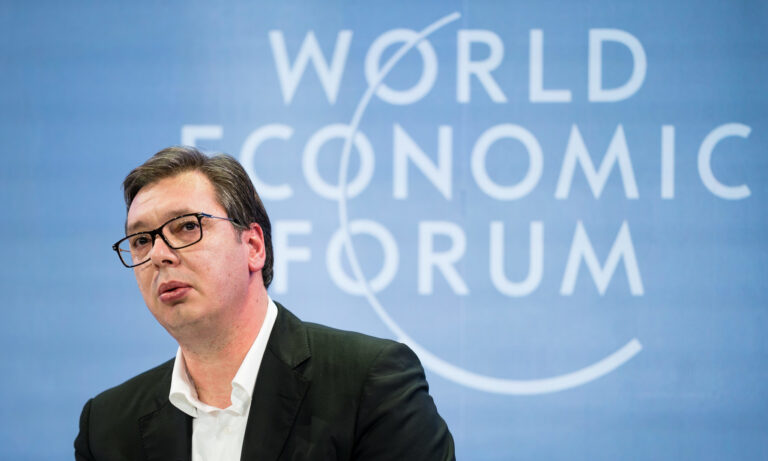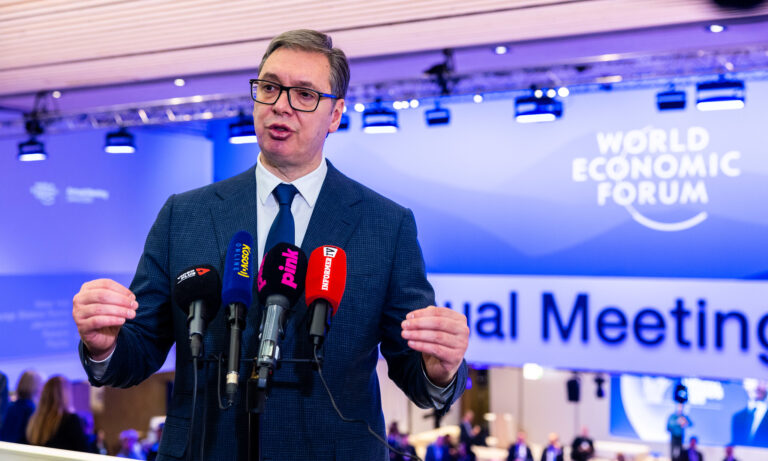
With activities ranging from hastily assembled initiatives to holistic market assessments, Chinese companies are getting their foot in the door to the Balkans-with clear intentions of leaving a lasting footprint in the region’s infrastructure market. However, it seems both sides, host countries and Chinese enterprises, will have much to learn about each other if they wish to achieve the success and sustainability of present and future projects.
Infrastructure The Chinese Way
The existing condition of capital infrastructure in the Balkan countries is one of the key causes of their economic underdevelopment. Countries on the political course toward closer EU integration have access to financial support provided through the instruments of pre-accession. Moreover, leading international financing institutions have contributed considerable amounts of funding, ranging from favorable grants to affordable credit loans for capital infrastructure investments. However, these institutions insist on certain rules of engagement, contracting standards, and overall investment management.
Chinese infrastructure investment mechanisms do not come with such a complex set of rules, but instead have ‘special features’. In the Chinese scenario, a Chinese bank offers credit loans to interested parties for Chinese EPC (Engineering, Procurement, Construction) companies to undertake projects, whereas the credit borrower remains the owner of the constructed facility. In most cases, credit is provided by the Chinese EXIM bank and China Development Bank under unconventional terms, given that China has opted out of international reporting systems, such as the OECD’s Creditor Reporting System and the International Aid Transparency Initiative. The EPC companies are state-owned SINOSURE affiliates, who import most of the raw material (coal, copper, zinc, concrete etc.) and workforce directly from China, thus depriving the local market of added spillover value from the project. Finally, the credit beneficiaries are public enterprises supported (politically and financially) by the host state.
The roots of the performance problems of Chinese infrastructure projects are surprisingly quite simple. Chinese SOEs have a replicative approach to projects, relying on previous experience. This is theoretically good, but has proven inadequate for European markets. The award, design, and final construction of a bridge, in the African market for example, presents a certain scope of work which focuses mainly on design, technology, materials, ground activities, labor, assembly etc. However, for the same project in the European market one first requires more data and information to be collected, skillfully processed, and then incorporated in the early planning stage of the project. This meticulous process results in the design stage being more suitable to the project’s existing context and adaptable to changes along the way. As such, the Chinese approach to infrastructure investment proves to be inflexible and ultimately inefficient in the European context.
Project success relies on the capacity of key stakeholders to carry it out throughout the project lifecycle. Both sides should have a clear vision of what they want to accomplish. Once a project goal is agreed upon, detailed talks, followed by assessments and negotiations are conducted, to define all risks and resource limits for the project’s successful completion. If one party proves to be ignorant of its own interest, nobody can blame the other side for seizing the opportunity to exploit the deal. The side which demonstrates irresponsibility will end up with the short end of the stick and, ideally, decision makers are held accountable for their failures.
These traditional drivers of project success are not followed by Chinese investors in the Western Balkans, largely due to their non-adherence to traditional European standards, leading to the recurrence of similar mistakes across Chinese-led projects. Likewise, government bodies’ representatives in the Balkan region are often immune to accountability due to their appointment largely hinging upon idiosyncratic political suitability. Moreover, when stakeholders with seemingly different understandings and experience meet, problems are bound to occur. These issues range from projects underperforming and experiencing budget or schedule overruns to projects constantly delayed and eventually cancelled.
Crossing The River By Feeling The Stones
The experience of Chinese infrastructure projects in the Balkans show that the more all project stakeholders know, and most importantly want to know, about the project and the contracted party, the more likely the project will be a success. The “Mihajlo Pupin” bridge over the Danube in Belgrade (opened in 2014) constructed by the China Road and Bridge Corporation (CRBC) is an example of a ‘success story’. Though some argue that the overall added value provided to the market was not as high as initially projected, due to the import of most of the building material and labor from China, the bridge was constructed within the desired timeframe and budget constraints. From there, CRBC went on to compete and win a share of work for the construction of the Pelješac bridge in Croatia,a project funded by the European Investment Bank (EIB). It’s safe to say that CRBC didn’t bid on this tender to show they could merely build the Pelješac bridge, since its design and engineering capabilities were not questioned. The true ‘victory’ for CRBC was the fact that it proved that CRBC can compete and win an open call made by an institution such as the EIB.
There are cases of Chinese companies doing a good market assessment and background check. Through these procedures, Chinese companies get to know the local market better and are perceived as responsible partners and investors who value the local regulatory framework. China Gezhouba Group Company (CGGC), the firm currently engaged in constructing the Tuzla 450 MW coal-powered thermal power plant project in Bosnia and Herzegovina, has also shown interest in developing the Ribarići hydropower plant in Serbia. CGGC realized that there is more to the project than the technical aspects. In 2015, CGGC conducted thorough cross sector due diligence of the project, focusing on market regulation and investment constraints. Upon receiving feedback from the Institute for Nature Conservation of Serbia, which outlined the negative impact the plant would make on the local and regional environment, they decided not to proceed with the project.
A project to build a 200 MW gas fired thermal power plant project in Pančevo near Belgrade illustrates the importance of reliable stakeholders to a project’s proper completion. There, NIS GazpromNeft decided to build a gas fired thermal power plant adjacent to its petrochemical facility. Following an open call for tendering in 2017 they signed an EPC contract with the Shanghai Electric Group. The planning phases, followed by design phases, have been executed according to all criteria, compliant with all necessary regulation and the project is on schedule.
Failing To Prepare Is Preparing To Fail
In Zrenjanin, a city around 80 km away from Belgrade, an official ban on drinking tap water has been imposed for over 15 years due to high levels of pollutant heavy metals in local water sources. Despite that, local authorities negotiated a public-private partnership with Linglong Tire for the construction of a tire factory – an extremely polluting industry. This development is strange considering there are dozens of Chinese SINOSURE affiliates willing and competent enough to conduct a full turnkey upgrade of the water treatment system. It would seem that those companies capable of completing the project are not aware of this perfect business opportunity, whereas companies present in the market and who are aware of the opportunity do not have the capacity to capitalize on it. In the meantime, Linglong’s hefty sponsorship of the Serbian National Football league won’t make Zrenjanin’s water any healthier, but just might improve the company’s public image.
The widely discussed Belgrade – Budapest railway project is the most recent example of the importance of strategic thinking, through assessment and analysis prior to making major decisions, let alone engaging in credit loans for capital infrastructure projects. The project was initially agreed in 2014 when the contract was signed, though no work happened until 2018, because of administrative and regulatory obstacles which were there from the start, but which hadn’t been given sufficient attention. This project underlines both the superficial nature of the local Hungarian and Serbian authorities rushing taxpayers’ money into the project and the unpreparedness of the Chinese side.
A similar obstacle led to the cancellation of the South Stream Project, a GazpromNeft-led project of building a gas pipeline from Russia to Hungary, through Bulgaria and Serbia. Bulgaria faced backlash from the European Commission when it insisted on conducting the tendering process in accordance with EU regulations, with the project’s sole investor, Russia, cancelling the project due to disagreements over this tendering process.
Undoubtedly, the Chinese side advancing the project, whether through a risk assessment, market analysis, regulatory overview, or any other general type of project preparation, should have been aware of this precedent, foreseen potential roadblocks, and prioritized this issue, leading to better project preparation. Viewing the Belgrade – Budapest railway project from a macro lens, it’s fair to question the purpose of the project, given that it was initially developed as part of a general idea to connect the port of Piraeus in Greece with Budapest, whereas railway infrastructure between Belgrade and Greece is already in desperate need of reconstruction.
Lessons learned show that Chinese companies interested in infrastructure investment should embrace the European regulatory structure. These companies must want to comply with European regulations, not work around them as though they are an obstacle. This compliance will enable these Chinese firms to fully utilize their industrial advantages, and will avoid claims, disputes, conflicts and project cancellations. It will also earn them additional respect from the market they seek to retain a foothold in.
On the other hand, government authorities and business stakeholders in Balkan countries who want to attract Chinese investment need to amend their business practices with regard to their East Asian counterpart. Namely, their duty requires increased responsibility, adherence to a stated goal, but above all, a higher degree of patience and foresight for plans that lay ahead
Written by
Miljan Radunovic
Miljan Radunovic is a PhD student at Singidunum University, in Belgrade, Serbia. He has consulted on Chinese overseas foreign direct investments developed through public-private partnership models in the Western Balkans region for over 7 years, spanning from state-owned enterprises (SOEs) to equity and wealth funds. His research focuses on the efficiency of Chinese Belt and Road projects in Western Balkans.


